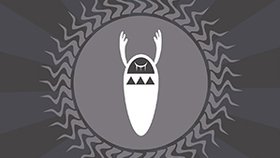Discover the Buzz: Does Crepe Myrtle Attract Bees? Unveiling the Secrets of This Beautiful Plant
Guide or Summary:IntroductionWhat is Crepe Myrtle?Bee Attraction: The Nectar and PollenThe Role of Bees in PollinationCreating a Bee-Friendly GardenConclusi……
Guide or Summary:
- Introduction
- What is Crepe Myrtle?
- Bee Attraction: The Nectar and Pollen
- The Role of Bees in Pollination
- Creating a Bee-Friendly Garden
- Conclusion: The Benefits of Planting Crepe Myrtle
Introduction
When it comes to creating a vibrant and lively garden, many plant enthusiasts often wonder, "Does crepe myrtle attract bees?" This question not only highlights the beauty of the crepe myrtle but also its ecological significance. In this article, we will explore the relationship between crepe myrtle and bees, examining the features that make this plant a favorite among pollinators and how it can enhance your garden's biodiversity.

What is Crepe Myrtle?
Crepe myrtle, scientifically known as Lagerstroemia, is a stunning flowering plant that thrives in warm climates. Known for its striking blooms in shades of pink, purple, white, and red, this plant adds a splash of color to any landscape. Beyond its aesthetic appeal, crepe myrtle is also celebrated for its long-lasting flowers that can bloom from late spring to fall, providing a continuous source of nectar for various pollinators.
Bee Attraction: The Nectar and Pollen
One of the primary reasons gardeners ask, "Does crepe myrtle attract bees?" is due to the plant's abundant nectar and pollen. Bees are naturally drawn to flowers that provide a rich source of these essential resources. Crepe myrtle's blossoms are not only visually appealing but also serve as a significant food source for bees. The flowers' structure allows bees to easily access nectar, making it an ideal stop for foraging.

The Role of Bees in Pollination
Bees play a crucial role in pollination, which is vital for the reproduction of many flowering plants, including crepe myrtle. As bees visit the flowers to collect nectar, they inadvertently transfer pollen from one bloom to another, facilitating fertilization. This process not only helps in the production of seeds but also enhances the overall health of the ecosystem. By planting crepe myrtle, you are not only beautifying your garden but also supporting local bee populations.
Creating a Bee-Friendly Garden
If you're considering incorporating crepe myrtle into your landscape, it’s essential to create a bee-friendly environment. This means planting in clusters, as bees are more likely to visit flowers that are grouped together. Additionally, avoid using pesticides that can harm these beneficial insects. By fostering a safe habitat for bees, you can enjoy the delightful sight of these pollinators buzzing around your crepe myrtle.

Conclusion: The Benefits of Planting Crepe Myrtle
In conclusion, the question "Does crepe myrtle attract bees?" is answered with a resounding yes. This beautiful flowering plant not only enhances the visual appeal of your garden but also plays a vital role in supporting bee populations and promoting biodiversity. By planting crepe myrtle, you contribute to a healthier ecosystem and enjoy the added benefit of attracting these essential pollinators. So, why not consider adding this stunning plant to your garden and watch as it transforms into a buzzing hub of activity?